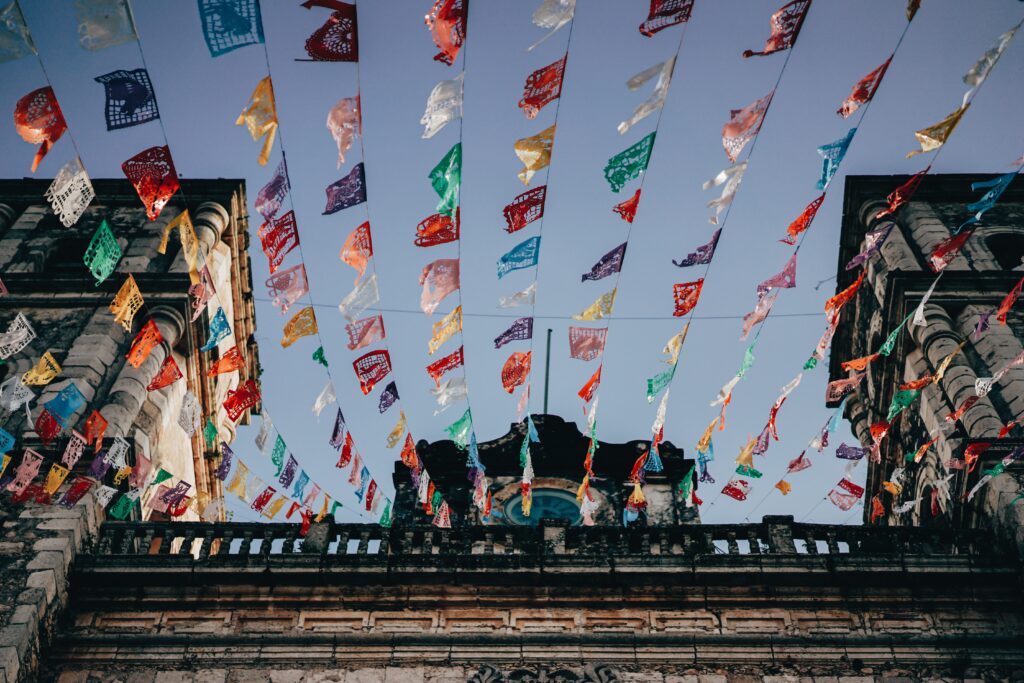Mexico
Where gods and travelers come to rest
An anthropological heaven, Mexico harbors soaring mountains and canyons, extensive deserts, mystical rain forests, and turquoise beaches. Its culture has adapted to globalization like few in the world, and at the same time, it has preserved unique traditions that make travelers fall in love with this country very easily. Mexican tunes promise to awaken the soul; the spicy universe of its cuisine brings color to the senses; and its architecture, dressed in bougainvilleas, moves the imagination with its imposing structures.
Inspiring, heartwarming, surprising, and proud
These are a few of the words used by our travelers to describe Mexico.
Where do you want to travel?
Mexico City
Oaxaca
San Miguel de Allende
Los Cabos
Unmissable places
-
We are Latin America’s number one tourist destination
according to the World Tourist Organization.
-
We are worldwide known for our gastronomy.
It is in fact Mexican gastronomy is recognized as a World Cultural Heritage by UNESCO.
-
Our country is the 13th largest exporter in the world and the first in Latin America
Agri-foods like beer, Tequila & Mezcal, and avocados as some of their star products.
History
- An ancestral land
- Spanish colonization
- Independence and political turmoils
- A powerful country
The land that is now known as Mexico has an ancient and powerful history. Its first inhabitants were indigenous, agricultural communities whose traditions, knowledge, and architecture have lasted until today. Among these peoples, the Olmecs, who lived in the Gulf of Mexico between 1150 and 300 BCE, stand out as the country’s mother culture, as well as the Mixtecs, the Zapotecs, the Tarascans, and the Totonacs. Other civilizations are also widely recognized, including the Mayas (1500 BCE to 900 CE), known for being the first to fully develop a written language in pre-Columbian America, and the Aztecs (1300 to 1521 CE), who created one of the most important empires in Mesoamerica. The indigenous legacy is still researched by historians and other experts, as discoveries continue to emerge in places like Teotihuacan, believed to be one of the largest cities in Mesoamerica and home of world-famous pyramids and valleys.

At the height of the Aztec empire, around 1517 CE, Hernán Cortés landed at Veracruz to begin the Spanish expedition in this region. Following years of negotiations, alliances, and battles, in 1521 Cortés managed to consolidate the conquest of the Aztecs (also known as the Mexicas) by defeating the Aztec capital, Tenochtitlán, marking the beginning of Colonial Mexico, and the imposition of Spanish rule over the Mexican land, which lasted over 300 years. As a consequence of the colonization, the indigenous communities were brought to near extinction, and, together with the arrival of African prisoners and the constant intermingling with Spaniards, Mexican people soon gained their complex heritage of mixed cultures.

As was the case for most Latin American countries, the independence of Mexico was a convulsed process. On September 15, 1810, the priest Miguel Hidalgo called the town of Dolores to arms against the Spanish Viceroyalty, effectively leading the first national independence movement, which ended in 1821 with the triumphant arrival of the Army of the Three Guarantees at Mexico City. Despite the independence, however, the general status quo remained the same, with “criollos” taking the place of the Spaniards, which created a period of unrest marked by continued power shifts between conservatives and liberals, and political and military defeats that eventually led to the loss of more than half of Mexico’s territory to the United States between 1836 and 1854. Mexico also had to fight off an invasion by the French emperor, which ended in 1862 with the famous Battle of Puebla, led by General Ignacio Zaragoza, now celebrated every Cinco de Mayo.

The political scene in Mexico changed drastically with the period known as Porfiriato, a dictatorship helmed by Porfirio Díaz that pursued modernization efforts, benefiting U.S.-based companies, the Catholic Church, and local landowners at the cost of the Mexican people. This led to the Mexican Revolution, launched in 1910 by Francisco Madero, a revolution that, with the drafting of the Constitution in 1917, brought many significant changes in Mexican leadership, economy, and social system. Labor unions were recognized, farmers’ rights were implemented, and the old hacienda system was overthrown. Over the years, the mixed economy (partly public and partly private) saw a consolidation of the Mexican estate, including the signing of the GATT and NAFTA agreements, the improvement of labor conditions, and a blooming culture that, despite social difficulties, has continued to grow until this day.

